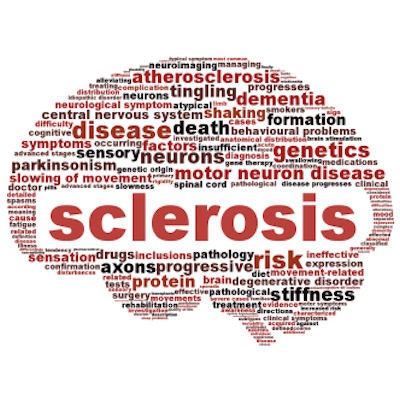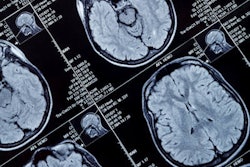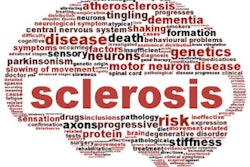
European researchers have identified a visual sign on 3-tesla MR images that effectively diagnoses and distinguishes multiple sclerosis (MS) from other conditions with similar symptoms, according to a study published August 19 in JAMA Neurology.
The critical requisite is the presence of a central vein that is known to exist in high proportion in MS lesions of patients with clinically isolated syndrome and relapsing-remitting MS (RRMS). When this central vein is absent, clinicians can rule out MS as the cause of a patient's adverse condition.
"A lesion-based approach that uses [a] central vein sign is simple, time-saving, and easy to apply as an additional diagnostic criterion for current clinical practice," wrote the study authors, led by Dr. Tim Sinnecker, from University Hospital Basel in Switzerland. "Moreover, our results indicate that it is possible to use a combination of lesion-based and proportion-based thresholds for the differentiation of MS and non-MS."
Diagnosing multiple sclerosis is particularly challenging, since MS symptoms can mimic migraine headaches, vascular diseases, and other inflammatory disorders. One differentiating factor is the presence of central veins in MS plaques, which has been a known phenomenon since the 1820s. Inflammation around the veins can form lesions that can be detected on MRI -- 7-tesla MRI, in particular.
In fact, previous 7-telsa MRI studies showed that visualization of central veins in MS patients provided "near-perfect differentiation" between the condition and other diseases, such as unspecific white-matter lesions, neuromyelitis optica spectrum disorder (NMOSD), and cerebral vasculitis.
But the lack of 7-tesla MRI systems at most imaging centers spawned a series of studies on investigating the central vein using 3-tesla MRI. While the results were encouraging, the research covered single-center studies with small sample sizes and little information on the "implication of different MRI hardware and protocols for central vein sign detection," the authors added.
Thus, Sinnecker and colleagues sought to gather more data with 3-tesla MRI through a multicenter study within the Magnetic Resonance Imaging in MS (MAGNIMS) Study Group. The researchers enrolled 606 eligible participants from eight neuroimaging centers across Europe between January 2010 and November 2016. The cohort included subjects with MS and relapsing-remitting MS, as well as NMOSD, systemic lupus erythematosus, cluster headaches, diabetes mellitus, and cerebral small-vessel disease.
All the subjects underwent 3-tesla MRI with a 3D T2-weighted fluid-attenuated inversion-recovery (FLAIR) sequence and a high-resolution gradient-echo sequence with either a susceptibility-weighted imaging (SWI) sequence or an optimized 3D T2*-weighted sequence. The final analysis included a total of 4,447 lesions in 487 patients. They defined different central vein sign lesion criteria by the proportion of lesions with central vein sign or absolute numbers of lesions with the sign.
"A key point of this work was to identify the central vein sign criteria that most accurately differentiate between patients with MS and clinically isolated syndrome and patients without MS," the authors added. "For this purpose, we defined central vein sign lesion criteria according to the proportion of lesions with central vein sign. A threshold ranging from 20% to 50% was applied in 5% increments. For each increment, sensitivity and specificity for detecting MS were calculated."
Using those parameters, the researchers achieved sensitivity of 68% and specificity of 83% for distinguishing MS from other conditions using a 35% central vein sign proportion threshold. With the presence of three or more central vein sign lesions, sensitivity decreased slightly to 62%, but specificity rose to 89%. The combination of proportion threshold and three-lesion criteria resulted in a sensitivity of 83% and a specificity of 68%.
To further validate the results, the authors proposed a large prospective study of the central vein sign in patients with MS-like symptoms, which also could help determine how this approach could benefit clinical practices in accurately diagnosing MS.


.fFmgij6Hin.png?auto=compress%2Cformat&fit=crop&h=100&q=70&w=100)





.fFmgij6Hin.png?auto=compress%2Cformat&fit=crop&h=167&q=70&w=250)











